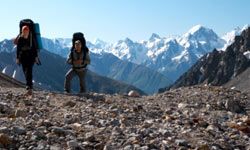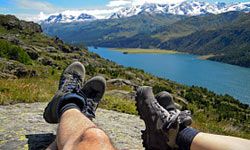When the rains came, the winds howled and the temperature dipped, Aaron Licudine, 24, of West Linn, Ore., scrambled to find shelter. With no food, water, cell phone, compass or the proper clothes, Licudine, who was hiking the Oregon Badlands Wilderness Area near Bend, finally hunkered down in a cave [source: Lerten and Burns].
When Licudine failed to return to the campsite, his friend dialed 911. Nearly 40 members of the Deschutes County Sheriff's Search and Rescue team bounded into action, riding horses and ATVs in search of the missing hiker. A helicopter took to the air as ground searchers scoured the countryside. The next day, rescue workers found Licudine cold, wet and hungry, but otherwise OK [source: Lerten and Burns].
Advertisement
Experts say Licudine did most everything wrong when he went for his jaunt in the 30,000 acre wilderness area that contains harsh terrain, lava flows, ancient junipers and rock formations. He wasn't properly prepared. He didn't have a map, nor did he have a compass or cell phone, all of which are essential when hiking. He even didn't have the right clothes [source: Lerten and Burns].
Whether walking across the Appalachian Trail or the backcountry of Oregon, proper preparation is crucial on a long hike. Having the right clothes, enough food, and the correct gear will not only make the experience more enjoyable, but it could save your life.


